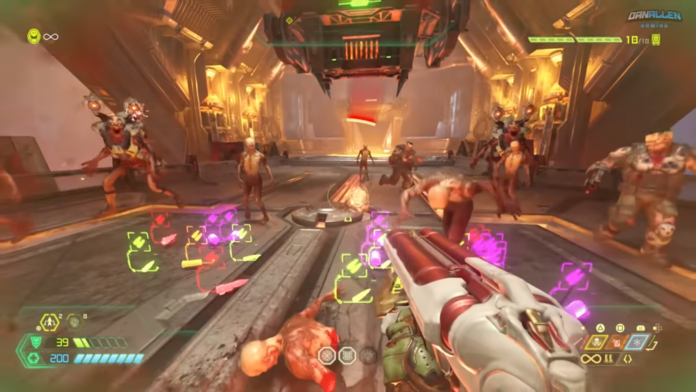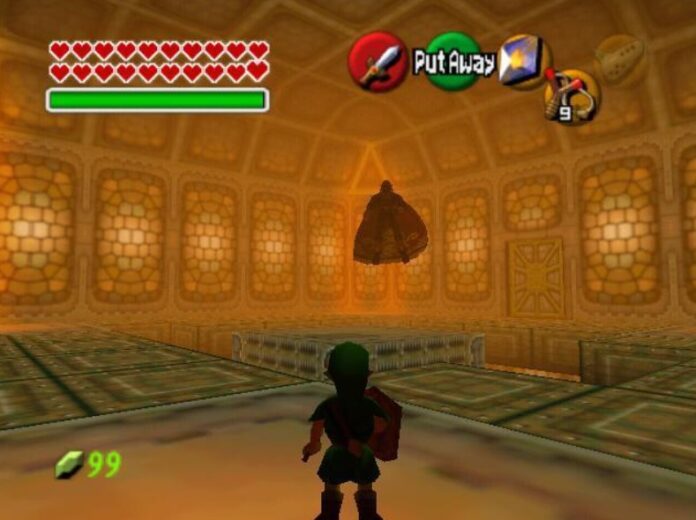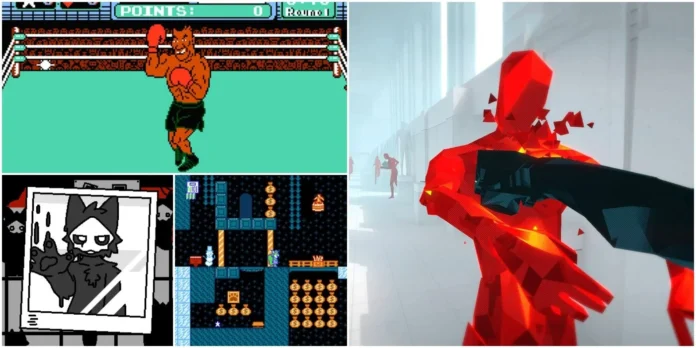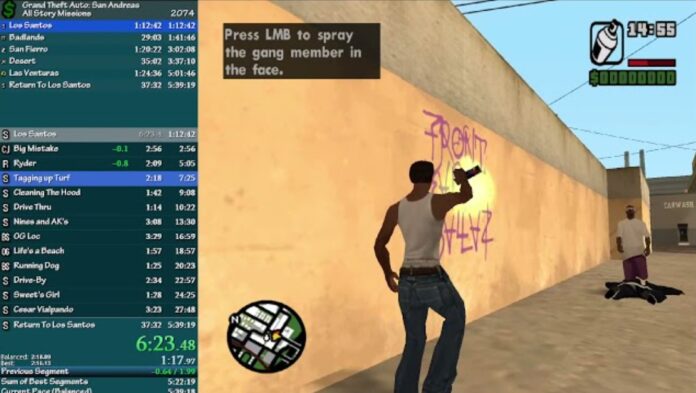Speedrunning, or speed gaming, is a video game technique used to complete a game as fast as possible. Speedrunners often use glitches and exploits to complete games more quickly than intended. The most common speedrunning techniques are the ” pacifist” and ” pacifist+” categories that require no violence against any non-player character (NPC).
Speedrunning is a term used to describe the act of playing games in a way that is meant to be completed as quickly as possible. The Wikipedia speedrun rules are the set of guidelines that are followed when completing a game.
Speedrunning has been around for decades, but it has recently gained prominence thanks to gamers. “What is speedrunning?” many people who aren’t familiar with video games wonder. What exactly is a speedrun? Why is it so well-liked?” At first glance, speedrunning is a simple concept.
This is the definition of speedrunning:
The act of beating a video game, or a segment of a game, as quickly as possible while adhering to a set of rules established by the game’s individual community is known as speedrunning. Leaderboards are used in Speedruns to keep track of who has the fastest times in various categories such as Any percent, 100 percent, and other rulesets.
But there’s more to it than that. Hard effort, practice, grit, consistency, strategy, technique, technical knowledge, risk, chance, community, and enthusiasm are all important factors. Speedrunning is a lot more than meets the eye. There’s a reason it’s so popular on the internet, particularly on streaming platforms like Twitch and YouTube.
On a Surface Level, Speedrunning
Many people think of speedrunning as just beating a game in the shortest amount of time feasible. While this is correct, there is more more to it than you may think. Speedrunners, or those who speedrun, devote countless hours to their sport.
Minecraft, Super Mario 64, Celeste, The Legend of Zelda: Ocarina of Time, and Super Mario Odyssey are among the most popular games for speedrunning.
And it’s via these games that many individuals learn about speedrunning. On YouTube, videos showing runners completing Minecraft in under 20 minutes or gamers conquering Super Mario 64 have racked up millions of views. In the comments section below, tell us how you got into speedrunning.
But how do these individuals manage to conquer these games so quickly? I mean, you’ve probably played a couple of these games before… However, beating the game takes weeks, if not months. Depending on the category in which they compete, speedrunners use various tactics.
Every game has its own set of categories, and Super Mario 64 includes a few that various runners like and practice. The following are some of the most frequent categories found in all games:
Glitched to a certain extent

The most popular speedrunning category is probably “Any percent with errors,” which is usually labeled as “Any percent.” To conquer the game, speedrunners take advantage of all of the game’s flaws and faults. Everything is on the table here. If a runner wishes to use a glitch to skip half of the game, they can do so.
Of course, there are still certain general speedrunning limitations in place. Most speedrunning communities, for example, do not allow the use of macros, turbo buttons, customized controllers, save states, “ram watching,” hardware modification, or tool help. What this category boils down to is how quickly a person can beat a game under regular playing conditions without any limitations on the in-game mechanisms.
The majority of the notorious speedrunning instances originate in this category.
Take this famous Legend of Zelda: Ocarina of Time speedrun, for example. Players have beaten the game in under eight minutes, despite the fact that it normally takes weeks to finish. There are just eight of them.
What may seem to the ordinary player to be gibberish may sometimes be a display of talent and commitment.
This image seems to be… I’m not entirely sure. It doesn’t seem to be anything that makes sense or is even playable. If you’ve ever seen this section of the map in Kokiri Forest, you probably placed your hands on your head in astonishment, afraid that your progress would be lost unjustly due to a gaming bug. To speedrunners like Amateseru, however, this image depicts full command of the game and the circumstances. He understands how he got here, why he’s in this position, what he has to do next, and he’s even calculating how long it will take him to beat the game at this point. Runners have full control over the game they play and are constantly juggling several tasks in their heads.
In a nutshell, what is Any percent in speedrunning?
In speedrunning, any percent implies beating, or getting to the end credits, of a game as quickly as possible without any extra collecting, constraints, criteria, or in-game limits. Any percent refers to the fact that the speedrun may be completed with any percentage of the game completed as long as the end credits are reached. Glitchs, out of limits, incorrect warps, arbitrary code execution (ACE), and/or any other mechanisms deliberately or accidentally introduced into a game are used in this speedrun category.
Any percent’s main goal is to test how far a person can push a game. This is the way to go if you want to push a game to its utmost boundaries.
Not everyone, however, wants to be confronted with out of limits, incorrect warps, or insider knowledge of the game’s programming. Some individuals want to complete a game as fast as possible while remaining in a more comfortable environment.
Glitchless to a certain extent

Runners compete in this category by completing the game as quickly as possible without using glitches. They must play the game exactly as it was designed, with no bugs, flaws, or exploits. Of course, it’s still not exactly “as intended,” since games are designed to be enjoyed at a leisurely pace. Furthermore, what constitutes a “glitch” is determined by the speedrunning community for that game.
As a caution, speedrun categories aren’t usually so generically titled. Instead of “glitchless,” the category may be called after which glitches are permitted or not allowed. You could, for example, see Any percent No SQ/WW/OoB. This means the speedrunner can reach to the credits at any point in the game, but they can’t save and quit (SQ), utilize incorrect warps (WW), or go out of bounds (OoB). Many different name conventions are possible, and it is ultimately up to the community around that particular game to decide.
These kinds of speedruns usually follow the same paths as regular gamers. Even so, it’s a lot quicker and better tuned. For instance, you may discover that all of the dungeons are still being finished, but not always in the same sequence. Coming up with creative methods to go from point A to point B faster while using concepts you were acquainted with on your first playing may be a lot of fun.
The Legend of Zelda: Ocarina of Time, which was mentioned previously, also includes an any percent, glitchless category. The world record time for the glitched category was 7:09.850 seconds (as of the time this article was published). Dannyb’s time in the glitchless category is 3:39:47. Imagine playing at top speed for almost four hours! Both categories require a high level of talent and commitment.
Even yet, some of us are completionists, and we desire a more complete experience.
Speedruns at a hundred percent

Speedrunners compete in 100 percent categories, where they attempt to complete a game as quickly as possible. Collecting all 120 stars in Super Mario 64, for example, as shown in this run. There are both glitched and glitch-free categories, as well as many possibilities in between.
These runs, obviously, take a lot longer than the % categories. This is due to the fact that ‘everything’ in the game must be completed.
Cheese’s 100 percent Super Mario 64 World Record Run (120 Star).
Cheese, the runner, was able to maintain concentration for almost two hours! He now owns the global record for the 100 percent category in this game, with 120 stars, and it is well-deserved.
A complete, or 100 percent, completion in speedrunning involves finishing a game as quickly as possible while adhering to a set of criteria defined by the speedrunning community. Super Metroid, for example, has an in-game completion counter. Other games, such as Super Mario 64’s 120 Star, are less apparent. Furthermore, the speedrunning community may set the criteria for 100 percent completion in a game. For example, in Zelda games, 100 percent typically means collecting all items and upgrades but not dungeon-specific things like tiny keys or compasses. Similarly, map completeness is often left out of community-defined 100 percent categories.
There are a variety of additional speedrunning category kinds besides any percent and 100 percent.
Speedruns with the Help of a Tool (TAS)

A tool aided speedrun, often known as a TAS, is a speedrun that eliminates the human factor and demonstrates how broken games may be. These speedruns are done using outside tools that aren’t included in the game, such as save states, automation, and methods that aren’t feasible for ordinary people to execute, such as frame perfect, pixel perfect, and other approaches. Some TAS, for example, display up and down, or left and right, when two opposing directions are pushed at the same time – a method that most conventional game controllers cannot handle.
TAS may also include several instances of frame flawless mashing. For instance, if a game plays at 60 frames per second and contains a gimmick that works best when an X input is seen every other frame, the TAS may simply code an X input every other frame. Some TAS are designed to conquer a game as fast as possible, while others are designed to be humorous or amusing. Running Flappy Bird in Super Mario World using just the game’s code, some additional Super Nintendo hardware, and some code to execute the precise inputs required to abuse the game in unimaginable ways is a great example of this.
Some of the TAS will also vie for world records. When it comes to tool aided speedruns, the world record may only be 1 frame (or 1/60th of a second) quicker than second place after many hours.
You may have noticed that I’ve been talking about world records a lot lately. What do they imply for speedrunners?
In the sport of speedrunning, world records are very important

The atmosphere of self-improvement and respect in the speedrunning world is incredible. Speedrunners often play the game because they like it. They typically strive to beat their previous best time (PB). They like honing their talents and putting themselves to the test.
Getting a world record, on the other hand, is a frequent goal for speedrunners.
It’s not simple to set a world record amid a community of devoted, high-skilled players. Runners pace themselves and upload them to Speedrun.com, a speedrunning community where speedrunners may share their times.
Each game includes a team of specialists that serve as moderators. They establish guidelines and monitor each submission to ensure that it is legitimate and does not violate any of the rules.
The communities consider world record runs to be pivotal events in the game’s history. These are the videos that have been seen millions of times on the internet. On Twitch or YouTube, speedrunners broadcast themselves trying to break world records in front of thousands of live spectators.
Why do hundreds of individuals who have never done a speedrun watch others do it?
Because of the incredible tenacity, emotion, and talent that went into it.
A More In-Depth Look into Speedrunning

Behind the scenes of viral videos of world record runs, there is a lot going on.
As previously said, speedrunning entails a great deal of effort. Practice, grit, consistency, strategy, technique, risk, luck, and enthusiasm are all important.
Practice and hard work
Runners dedicate hundreds, if not thousands, of hours to their sport. Cheese has “clocked more than 5,000 hours of playing in a single game,” according to this Engadget story. This was taken in 2017. He’s still in the game.
To put it in context, 200 days is a long time. Although practice makes perfect, this is just crazy. Even those who aren’t gamers may appreciate this kind of commitment.
Consistency and grit
Runners are tough. They don’t give up after they’ve been training for years and still don’t have a world record. They continue till they have the desired amount of time.
Runners value consistency above everything else, which is why they practice so much. They have it if they nail a difficult portion of the game a thousand times.
Technique and Strategy
Speedrunners are very conscientious about the tactics they use and the approach they employ. On forums, people debate the best tactics and make sure to disclose when they’ve achieved a game-changing breakthrough. Sometimes, as we’ve seen numerous times in the speedrunning community for GoldenEye 007 for Nintendo 64, fresh breakthrough techniques are disclosed via a hype build up video.
The beauty of the speedrun community is that setting a world record is fantastic. However, if someone merely helps to reducing the world record, even if it isn’t theirs, they may be proud of their contribution.
Runners use forums like Reddit and other gaming sites to discuss their tactics and compare them against those of others.
Gamers in the community are also known for their incredible timing and accuracy. Certain games require frame-perfect inputs. Alternatively, you might make pixel-perfect motions in the game. Imagine continuously pressing a button in the same fraction of a second! It’s insane! Or knowing precisely where pixel to place your character on and repeating the process as quickly as possible? It may be intense, go awry, or be very clutch!
Chance and Risk
In certain games, the speedrun categories include a considerable amount of luck. This does not imply that the runner has no influence over the situation, but it is undoubtedly a component. RNG, or random number generation, is a term used in gaming to describe the random elements of a game.
Minecraft – Random Seed, Glitchless is a fantastic example of a speedrun category using RNG.
We’re all acquainted with the game Minecraft. To reach the End Dimension and kill a dragon, players must gather a variety of things. However, the environment in which participants are placed is totally random every time a game is begun. This is the most important element of the game’s randomness, although there’s a lot more.
Why would runners devote their time to a game in which they would have little influence over many important aspects? How would you even go about running it?
Players must concentrate on improvisation and adaptability rather than learning button inputs or remembering game sections in games like this.
Minecraft runners must come up with answers on the go and do not have the luxury of knowing precisely what will happen next. Many players are irritated by games in which crucial aspects of the game are entirely random.
This is in contrast to games like Super Mario Bros., where runners are aware of what is going on. They understand precisely what to do, how to do it, and when to do it. It’s just a question of getting the technique right. In most speedruns, luck is still a role, although it can frequently be controlled or responded to, and it seldom makes or breaks a run.
When speedrunning a game that involves a lot of luck, as renowned speedrunner Narcissa Wright once pointed out, the top players who get the luckiest are typically the ones who have put in the most time. It’s rare that someone would get to the top of a scoreboard by chance without first putting oneself in a position where luck will help them. To make the most use of luck, or even to become fortunate in the first place, skill and commitment are needed.
Community
Speedrunning may often be more about the community than the speedruns itself. You may wish to participate in community activities after you start joining the speedrun Discord channels. Ranomizer racing, competitions, glitch-hunting, and just talking about the game you all love are all examples of community experiences.
Time spent with your new friends will be some of the most enjoyable aspects of speedrunning.
Passion
Clearly, speedrunning is a huge interest for some players. There’s a lot to appreciate in how passionate they are about the game they play. They also create a lovely community around a game.
Nobody would devote tens of thousands of hours to a game if they didn’t like it.
So, who is it that devotes their time to these games?
Those Who Commit Their Lives to Speedrunning

Streams or videos of speedrunning are watched by millions of people. However, according to Speedrun.com, only a few thousand individuals really commit to the grind.
Some speedrunners have day jobs, while others are fortunate enough to be able to support themselves via streaming.
Runners who work regular jobs are similar to us. We get up, go to work, and raise our children, but after the sun sets and everyone has gone to bed, it’s back to work. They devote hours of their spare time to honing their game.
Dream and Cheese, two YouTubers and Twitch broadcasters, speedrun and create content as a full-time profession.
In these situations, individuals may frequently assist others in addition to earning a living for themselves! Every winter, summer, and other seasons of the year, speedrunners collect money for charity, which is an amazing aspect of what they do. Winter and summer are particularly mentioned since the year’s most important speedrunning competitions take place over two brief weeks on opposite ends of the calendar.
Speedrunning for a Cause – Games Done Quickly

Games Done Quick is an organization that brings speedrunners from all over the globe together to compete in front of a live audience and an internet broadcast.
Runners collecting funds for a good cause.
These great runners can perform well in front of a live audience. Every year, in January and July, respectively, AGDQ (Awesome Games Done Quick) and SGDQ (Summer Games Done Quick) take place.
Viewers are invited to contribute to help generate funds for a good cause. In exchange, runners will give their character a humorous name or challenge themselves to do a certain job. GDQ has raised more than $25.7 million for charity.
What Can Speedrunning Teach You?

There isn’t much to gain from speedrunning. You’re not going to use millisecond movements or glitches to make things go your way in your life.
However, the individuals behind it can teach you a lot.
Runners instill in us the values of dedication, enthusiasm, and grit. They never give up in the face of adversity, which is very commendable.
While we may not be setting world records or making money from internet broadcasts, we may still accomplish our ambitions and goals by putting in the effort, practicing patience, and strategizing.
This comparison may seem a little silly, but it’s accurate. We can surely earn that promotion or ace that class if a little kid in his bedroom could climb to prominence via hours of effort.
In our spare time and via our interests, we may learn to be generous.
And we must learn to devote sufficient time to our skills in order to develop.
We may improve ourselves by learning new skills.
The camaraderie of speedrunners is incredible. A loving community that is kind, supportive, and enthusiastic. Love for one another, for their sport, and for doing things for the greater benefit.
You may want to try speedrunning after reading this. I strongly advise you to do so. I made it seem all serious and lofty, but it’s also a pleasant pastime. Here’s an article that will take you through the process of getting started.
So grab your controller, set a timer, and start playing your favorite game. You will not be sorry!
Frequently Asked Questions
What is the point of speedrunning?
The point of speedrunning is to beat a game as fast as possible.
What is a any speedrun?
A speedrun is a type of gameplay in which the player completes a game as fast as possible.
What is the fastest speedrun ever?
The fastest speedrun is 0.00 seconds, which was achieved by a player named Zynthian on the PC version of Beat Saber.
Related Tags
- pb speedrun meaning
- what is speedrun in minecraft
- igt speedrun meaning
- speedrun wikipedia
- rta speedrun meaning






